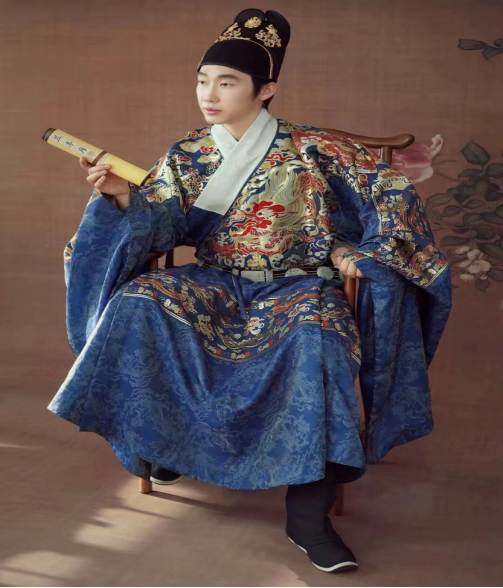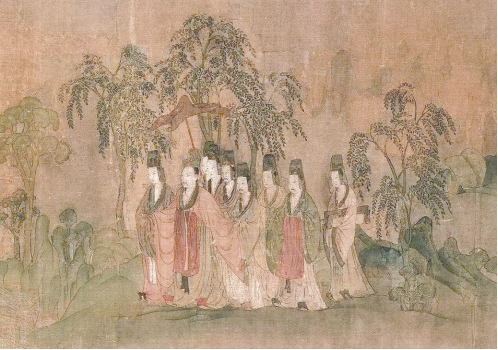Ming Dynasty men’s Hanfu is a significant stage in the history of Chinese clothing development. It inherited the styles from the Song and Yuan dynasties,formed a unique aesthetic under the new historical context. At the founding of the Ming Dynasty, the court ordered to “restore the Tang Dynasty’s clothing system,” In addition, Confucian thought was thriving at that time,this laid the foundation for the formation and development of men’s Hanfu in the Ming Dynasty.
Ming Dynasty male Hanfu is not just a kind of clothing; it also skillfully integrates ritual norms and life aesthetics together, becoming a kind of “language” of the Ming Dynasty social system, which can reflect people’s cultural thoughts, behavioral norms, social status, and scholarship and cultivation. From the imperial robes worn by emperors to the straight jackets worn by scholars, the tailoring of each piece of clothing contains the philosophical thought of “harmony between man and nature,” and every decorative pattern shows the magnificent aesthetic conception of the Ming Dynasty.
Several typical Ming Dynasty male Hanfu
In the Ming Dynasty, people of different identities had different requirements for their attire. Commoners generally wore Taoist robes and cloaks. Scholars wore round-collared long-sleeved shirts. Officials wore cloud brocade round-collared robes, which were also covered with cloud brocade coats outside.
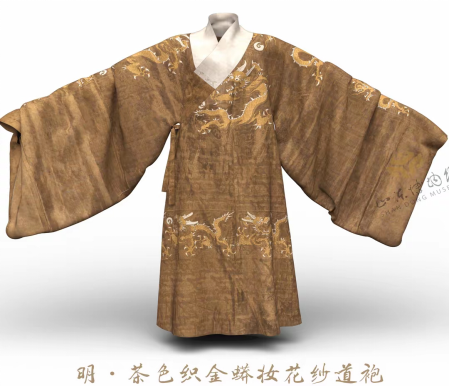
Taoist robe
The Taoist robe is a symbolic garment for the literati class, with its shape being very particular. The cross-collar and right-side lapel are matched with big sleeves. The center seam on the chest and back symbolizes the “Doctrine of the Mean,” and the “hidden pleat” structure under the armpits not only facilitates people’s movement, but also allows the robe to maintain a smooth visual effect. Scholars often embroidered bamboo patterns in a hidden way on plain robes, expressing their aspirations and integrity through the clothes. The straight style is quite similar to the Taoist robe, both have straight collars, and there are flaps on both sides. The difference is that the flaps of the Taoist robe are on the inside, while those of the straight style are on the outside. The front and back flaps of the inner garment are cut separately from top to bottom, belonging to a type of long gown. Below the waist, there are pleats, similar to a pleated skirt.
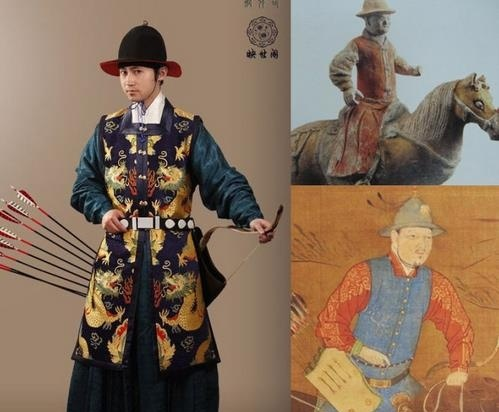
Cloak
The cloak is made of gauze and is short-sleeved with a round neck. The body of the cloak is relatively tight and narrow, and its length exceeds the knee. There are two types of cloaks: one-piece and symmetrical. It is usually worn over long-sleeved clothes, with a sleeveless shirt underneath. Its characteristic is convenient to wear, and the style of the sleeveless shirt is relatively simple, generally a thin shirt with a sleeve cover inside.
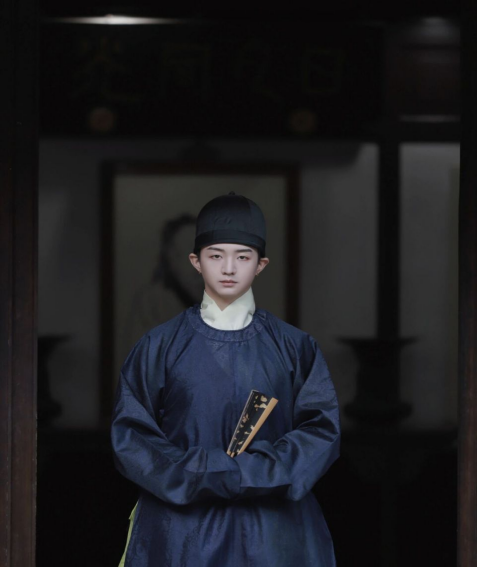
Official round-collared robe
The official round-collared robe has a unified standard, mainly embroidering different flying birds and animals in front according to the official’s rank, and there are specific regulations regarding color, mainly monochrome, forming a specific official system together with the robe.
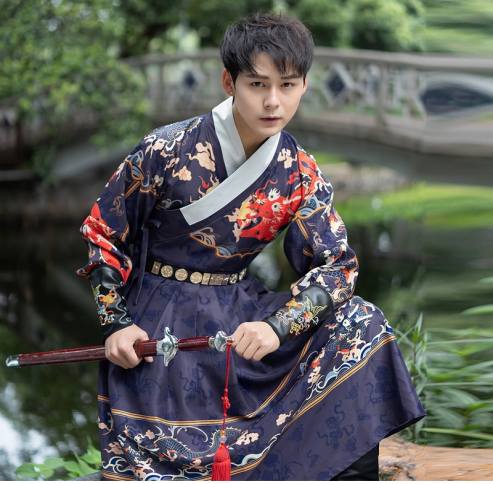
What do patterns symbolize?
The pattern system of Ming Dynasty clothing is like a “mobile dictionary of symbols,” with different patterns having different meanings. The crane pattern symbolizes an outstanding character. The river and sea pattern implies the eternal stability of the state, and the four-combined cloud pattern expresses people’s hopes for perfection. Artisans used complex crafts such as gold weaving and embroidery to create a gradient color effect called “paddy field clothing” at the edge of the clothes. In terms of color use, strict theories of the five elements were followed. Common people could only use green and other colors, while nobles could wear true red, crow blue, and other colors. The perfect combination of patterns and clothing systems together depicts the magnificent picture of traditional Ming Dynasty male Hanfu.
Nowadays, Ming Dynasty male Hanfu has been innovatively developed and improved in inheritance, with tailoring techniques constantly progressing and floral and bird decorations being unique. Traditional clothing is combined and improved with modern fashion. This indicates that the aesthetic genes of Ming Dynasty male clothing are realizing trans-temporal inheritance. This cultural revival is not a simple replication of traditional forms, but through the deconstruction of traditional elements, making the cultural memory contained in the clothing radiate new vitality. In today’s continuously improving cultural confidence, understanding the wisdom in our ancestors’ clothing may open a door to future aesthetics for us.

